- Home
- Bill James
The Man from the Train Page 5
The Man from the Train Read online
Page 5
Edward P. Boyle, chief of detectives in Kansas City, took charge of the investigation. He was a veteran detective and a very savvy guy. Within hours, Boyle had changed the direction of the investigation. Inside the closet, which had recently been whitewashed, Boyle found the bloody prints from four fingers and a thumb of a man’s left hand. A section of the wall was cut out and taken to Kansas City. Inspector Boyle developed a list of all of the hired men who had worked at the Bernhardt house in recent months, so that their fingerprints could be compared to those found at the scene.
The pickaxe was found in the barn, its handle covered in blood, and a button was found near the victims, a button probably from a man’s shirt, while none of the dead men was missing any shirt buttons. The head of the pickaxe had apparently flown off during the last murder in the barn. A clock weight was found in the barn like the one used to murder Mrs. Bernhardt. The search of the house revealed a strong box in which the family’s money and their valuable papers had been kept. The box was undisturbed.
Boyle studied the victims. The hired man and the seventeen-year-old visitor, he discovered, had been killed by a single blow to the head—but the Bernhardts had been savagely beaten, as if by someone who hated them. I was shocked to read this, in a 1910 newspaper. In a modern police investigation, if one victim of a multiple homicide bore the main brunt of the attack, the police would immediately focus on this, since it would indicate anger directed at that victim. However, I had always believed that this insight came about in the age of the profiler, mid-1970s on. But here it is, in a 1910 newspaper. Inspector Boyle states quite clearly that he now believes that revenge was the motive for the crime, not robbery, and that the reason for his belief is the level of violence directed at the two victims who lived on the farm, as opposed to those who were more transient.
A newspaper reported “it was learned that on Wednesday, the day on which the murdered persons were last seen alive, a mysterious wagon was seen at the Bernhardt farm. This wagon contained three men. That afternoon neighbors heard screaming coming from the vicinity of the farmhouse. A short time after this the wagon containing the three men was driven rapidly away from the vicinity.”
The story of the three men and the wagon and the screaming never comes back up after this first telling. It appears that Inspector Boyle simply ignored this story, treating it as a part of the excited gossip that always occurs after an event of this kind. The central puzzle of the crime, however, is how one murderer was able to overcome three adult men, given that those men were presumably awake, alert, and in possession of their faculties (presumably so, since they were found in the barn, rather than in their beds). Even if the murderer had a gun, he couldn’t have done that. He would have had to put down the gun to hit somebody in the head with an axe, and this certainly would have provided the other two men with the opportunity to either fight or flee. If there were three people involved in the murder, that would explain how that could happen.
John Feagle had the next farm over from the Bernhardts. They didn’t get along. Feagle had caught the seventeen-year-old Tom Morgan setting traps on his property, and had run him off. Morgan said that George Bernhardt had told him it would be OK. Feagle went over to the Bernhardts and demanded to know why Bernhardt had given Morgan permission to set traps on his (Feagle’s) property. Bernhardt said that he hadn’t. Emeline Bernhardt came out, joined in the quarrel, and called Feagle a liar. That was the last time the Bernhardts had been seen alive.
Feagle was interviewed at length by Inspector Boyle and Kansas City Chief of Police H. T. Zimmer. Feagle told inconsistent stories, or anyway they said that he did. Feagle said that he had heard cries of distress from the Bernhardt home later that night, and had seen two hunters leaving the property. He recognized the men. On December 12, two days after the bodies were discovered, Feagle was arrested. After his arrest bloody overalls and bloody clothes were found, said the police, hidden in a closet on the second floor of his home.
If I could digress for a minute—alerting you in advance that Feagle will be cleared of the crime—note the use of the terms hidden or concealed in the above description. (Both terms were frequently used in reporting the discovery of the clothes in the closet.) Feagle and his wife and his father said that wasn’t blood, that was paint; he had painted the barn red. As to the clothes being “hidden” in a second-floor closet, do you remember the lantern that was found “hidden” in Howard Little’s barn? Where exactly would you expect to find soiled and useless clothing? Hanging in the entryway? Laid out on the kitchen table? Draped over the bannister? Isn’t a box in a second-floor closet about where you would expect to find these things?
I am not anti-police; I am pro-police. I am all in favor of the police catching the bad guys and stringing them up by their murderous little thumbs. But I want to point out how easy it is for the police, once they decide that you committed a crime, to start shading the facts to make you look guilty. If dirty clothes are found in the laundry basket, then the accused is in the process of cleaning up the evidence; if they are in a box, they are “hidden” in the box. The accused “gave contradictory stories”; the same was said about Howard Little—as it can always be said; the police can always say that you gave contradictory accounts of what happened or of where you were. Learning to filter that stuff out is essential to thinking clearly about the evidence in crime stories. These claims are meaningless shadings of the truth much more often than they are valid characterizations.
Feagle was in custody for five days, which were very colorful and, were it not for the extreme gravity of the situation, almost comic. He implicated a former hired hand, Sam Dailey, in the crime. Dailey was also arrested. A coroner’s jury was impaneled in Olathe, Kansas, county seat of Johnson County, on Tuesday, December 13. Feagle testified in front of the panel, as did Dailey, some of the other former hired hands, and the two men Feagle claimed to have seen hunting on Bernhardt’s property. Somehow they started talking about chicken stealing. The Bernhardts had been troubled by somebody stealing their chickens, which was probably part of the reason they didn’t trust their neighbors. Feagle and the hired men started going back and forth, all of them claiming to have some reason to believe that it was the other guy who had been stealing chickens. It was sort of presumed that whoever had been stealing the chickens might also have been involved in the murders. This went on for two or three days, back and forth, until the jury panel announced that they’d heard as much about the chicken stealing as they needed to hear. When you live that close to the Missouri state line, you should probably expect somebody to steal your chickens.
A third man, Walter Button, was arrested 150 miles away, and brought back to testify. The Bernhardts paid their hired men seventy cents a day, whereas a standard wage would have been a dollar, and they were difficult to work for. This led to rapid turnover at the hired man position. The police were trying to play the suspects off one another, figuring that one of them must have done it. If they could get them all talking, the truth would come out. Dailey claimed that he had heard Feagle threaten to kill the Bernhardts. Button told stories about a woman who claimed to be Dailey’s wife. Gradually it became apparent that these guys were more blowhards than they were axe murderers.
Walter Button frankly did not like George Bernhardt, who was a hard man and given to confrontations with neighbors and hired hands, but he spoke highly of Emeline, the mother, who he said cared very much for the livestock, and always insisted that the cattle be treated well.
On December 15, Kansas governor Stubbs returned from an out-of-state trip, got off the train, and announced to the reporters who greeted him a $250 reward for the arrest of the men responsible for “one of the most horrible crimes Kansas has ever had.” Dailey was released on December 16. At that time it was also announced that the police were looking for “a tramp hired hand” who had been seen in the vicinity, a man with a “bull-dog face,” reportedly wearing corduroy clothes.
Feagle was formally charged with the murder
s on December 15 and then, on December 17, exonerated and set free. Two theories about this: (1) the authorities may finally have tested the paint on those overalls and found that it was, in fact, paint, and (2) the filing of charges may have been a last-ditch effort to sweat a confession out of him. Nothing more was ever said about the overalls; one has to assume that if it was blood, Feagle would not have been released. The fingerprints didn’t fit anybody that the police could find.
“I didn’t kill them,” Feagle told reporters after his release. “Only my gabby, foolish talk got me into this trouble. I’m not very bright. I don’t know how to look after myself and keep out of trouble.” The man in the corduroy suit was now considered the chief suspect in the murders. A railroad drifter named Harry Ryan—claiming to be named Harry Ryan—was arrested in Iola, Kansas, on December 17, after walking into a poolroom and asking if they had any newspaper stories about the murders. Sheriff Stead went to Iola to question him about the case, and decided that he could not have committed the crime. The man with the corduroy suit and the bulldog face was identified and arrested; he was named Albert Allen. He acknowledged being in the vicinity of the crime on the day before the murders, acknowledged that he had been a friend of the Bernhardts, and was arrested in possession of a watch inscribed with a B or an R. He was released later in the same day, when he provided a solid alibi for the day of the crime.
After the release of Allen the crime essentially disappeared from the newspapers. On December 29, 1910, the Bernhardt farm and all of the property on it—the livestock, furnishings, farm equipment—was sold at a public auction attended by more than a thousand people. John Feagle was one of the first to arrive, and bought several items.
“With the sale,” reported a wire service story, “probably what is the last chapter in the murder mystery was written, for the officers have no clew to the criminal.” Eighteen days after the murders were discovered, the property was disposed of, and the press declared the investigation at a standstill and the story finished.
They were not quite correct; even years later, it would occasionally come to light that Inspector Boyle or some other officer had traveled to Illinois or California to see whether a person in custody could be connected to the Bernhardt murders. In late December of 1911 (a year after the murders), a twenty-two-year-old man named Charles K. Bowman was arrested in Indiana in connection with the crimes, and returned to Kansas City to face prosecution.
He was arrested with some fanfare. He was an unstable youth, had talked too much about the murders, and seemed to have revealed knowledge of the murders, which he said he had been given by another person, the “real” murderer. Again, the newspapers all but pronounced him guilty. He was released on February 1, 1912, when it was established that he had been in Louisiana on the day of the crime.
To a modern reader the speed at which the investigation was essentially abandoned is quite astonishing. As twenty-first-century readers of crime stories we are accustomed to narratives of detectives who stick with an investigation through years and even decades of failure and frustration before ultimately unlocking the mystery. The idea of giving up on the investigation of a spectacular crime eighteen days in seems quite bizarre.
We tend to think of the modern world as fast moving, things happen at the speed of electrons. In many ways this is true; in many ways it is untrue. I believe the owner of the Chicago Whales made the decision to build what is now Wrigley Field in January 1914 (perhaps in December 1913) and had it built by opening day. Many things happened a hundred years ago with what now seems like incredible speed.
Into the early 1950s, it was common for murder trials to be concluded within 120 days of the crime. There are numerous instances, into the early 1950s, of people who were executed within 120 days of a crime. The Constitution guarantees the right to a speedy trial. The Warren Court, as an unintended consequence of well-intentioned decisions, reduced the speed of the process of justice from 80 mph to 15. This wasn’t necessarily a bad thing, nor was it necessarily a good thing. In this book we will see many examples of gross injustice resulting from the justice system moving too fast.
Lights had been seen in the Bernhardt house on Wednesday night, December 7. Boyle believed that the murders had been committed late Wednesday night or early Thursday morning. My opinion is that they were committed at dusk on Wednesday. I am guessing, right? In December lamps would be burning in the house by five o’clock. A man doing his evening chores in the barn would be carrying a lantern. My belief is that the murderer hid in the barn and found the pickaxe in the barn, where it naturally would be. One of the men, most likely the hired hand, came out to the barn to do his evening chores, milking the cows and feeding the chickens. The Man from the Train jumped out of the shadows and murdered him with the axe, then covered up his body with hay so that it could not readily be seen. After an hour or less George Bernhardt probably wondered what was taking the hired man so long to do his chores, and sent the seventeen-year-old out to check on him. The murderer waited until he had entered the barn, jumped out of the shadows, and murdered the second victim, then covered him up with hay in the same manner.
The two people in the house may have heard and seen nothing at this point, or they may have heard something and thought “What was that?” The true horror of what they were dealing with was beyond anything they could imagine. When the second man did not return from the barn, the third man—probably George Bernhardt—went out to find out what in the Sam Hill was going on out there. He probably supposed that something in the barn had broken, and they were struggling to fix it.
If the murderer had been hiding out in the barn, watching the house, he probably knew how many people were in the house. When the third man was dead he probably knew there was no one left in the house but an old woman. George Bernhardt was hacked up more than the other victims, not because the murderer especially hated him, but because the murderer had time to do that. He knew there was no fourth man coming. The murderer looked around the barn for another weapon, after the head of the axe flew off, and found a pair of old clock weights. Now certainly alarmed and terrified, Emeline Bernhardt looked out the door and saw a dark figure striding toward the house with a bludgeon in his hand. She ran desperately to the second floor and hid in a closet. A woman’s gold watch was reported missing from the scene—an indicator, if true, that this was not The Man from the Train, although money and other valuables were left in plain sight. He probably took some towels to clean up with. In the middle of the night he walked back to the train line, hopped aboard a slow-moving freight train, and was hundreds of miles away before the bodies were discovered. This is my conjecture.
Of all of the crimes that will be a part of this series, this one may have had the most professional investigation. Local officials immediately sought help from experienced investigators. Boyle, Stead, and Zimmer did not waste time waiting for bloodhounds or some spurious out-of-town expert. They preserved the crime scene—which was quite often not done at all, and in other cases was poorly done. They developed a list of suspects; they interviewed those suspects in an orderly fashion. They developed leads and worked them out. They realized early in the case that they were not dealing with a robbery, unlike several of the other cases, in which officials asserted in the first hour of the investigation that they were dealing with a robbery and doggedly persisted in that belief, despite the absence of any evidence to sustain that theory.
The police had a plan as to how they were going to solve the case. They examined the crime scene in minute detail. They studied the clock weight, which was one of the murder weapons, so closely that they were able to determine that this weight had been used only to murder Emeline Bernhardt, not the other victims. No one else who investigated any of these crimes studied their crime scene as meticulously. They did accuse innocent persons of the crime, but they dropped those charges when they were unable to develop evidence. They were persistent and determined, relative to the standards of the time. The only thing was, they just d
idn’t have anything to work with, and they ultimately failed to solve the crime.
* * *
Postscript: On August 20, 1916, Mr. and Mrs. Henry Muller were murdered on their farm near Stillwell, Kansas. A man named Bert Dudley confessed to murdering the Mullers and was convicted of their murders on September 19, 1916. On September 21, Dudley, who had previous criminal convictions of a serious nature, was dragged from his jail cell by a mob that overpowered the sheriff and battered down three sets of steel doors, and was hanged from a telephone pole south of Olathe, Kansas. It was the first lynching in Kansas in fourteen years, and the next-to-last ever.
Stillwell, Kansas, is only seven miles from the Bernhardt farm. After Dudley murdered the Mullers, stories were published alleging: (1) Dudley had once worked as a farmhand for the Bernhardts, and (2) he had confessed to another inmate that he had murdered the Bernhardts as well as the Mullers. While we think it is unlikely that Dudley murdered the Bernhardts, the possibility cannot be ignored, based mostly on the proximity of the crimes.
CHAPTER VIII
The Casaways
The startling thing about the murder of the Casaway family is the almost complete absence of racism in the coverage of the story. Newspaper accounts at the time of his death say that Louis Casaway was born and raised in New Orleans—at that time the only city in America where mixed-race marriages were tolerated and not terribly uncommon—and that he was born about 1860. Census reports suggest that he may actually have been born a free black citizen about 1855 in New Bern, North Carolina, and that in 1860 he was living in New Bern with Matthew and Christiana Marshall, the former a painter. His childhood was pitched into chaos by the Civil War, and he wound up in New Orleans, then moved to San Antonio about 1876 or 1877.

 I Am Gold
I Am Gold World War Two Will Not Take Place
World War Two Will Not Take Place Pix (Volume Book 24) (Harpur & Iles Mysteries)
Pix (Volume Book 24) (Harpur & Iles Mysteries) Disclosures
Disclosures The Principals
The Principals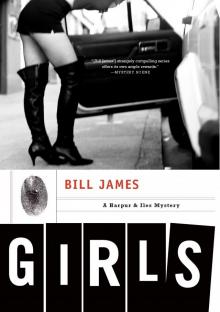 Girls
Girls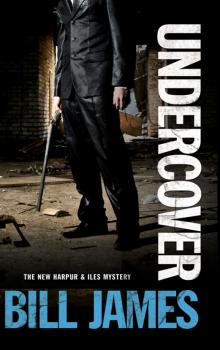 Undercover
Undercover Come Clean (1989)
Come Clean (1989)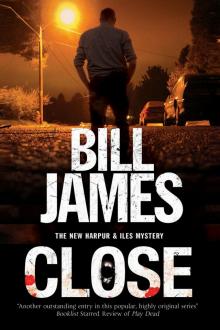 Close
Close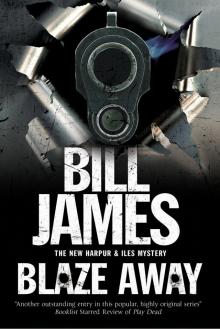 Blaze Away
Blaze Away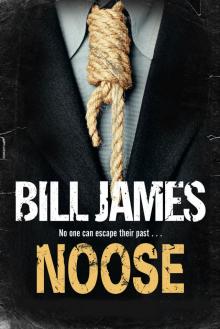 Noose
Noose First Fix Your Alibi
First Fix Your Alibi Hitmen I Have Known
Hitmen I Have Known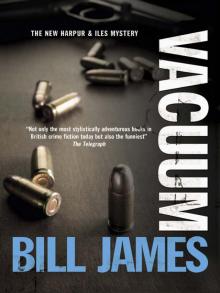 Vacuum
Vacuum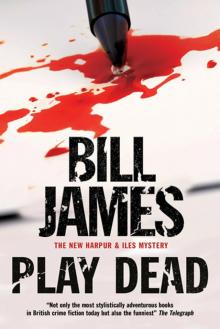 Play Dead
Play Dead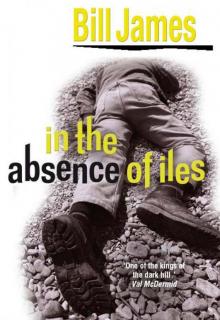 In the Absence of Iles
In the Absence of Iles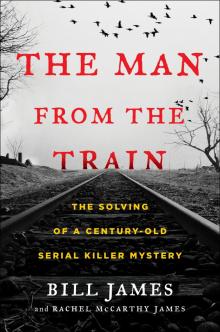 The Man from the Train
The Man from the Train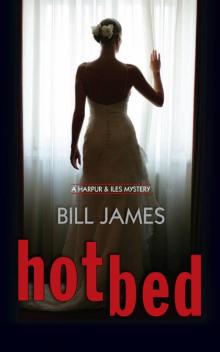 Hotbed
Hotbed Popular Crime
Popular Crime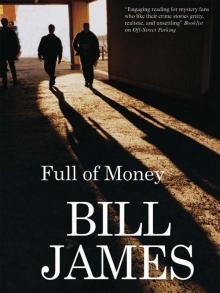 Full of Money
Full of Money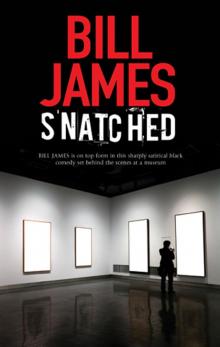 Snatched
Snatched